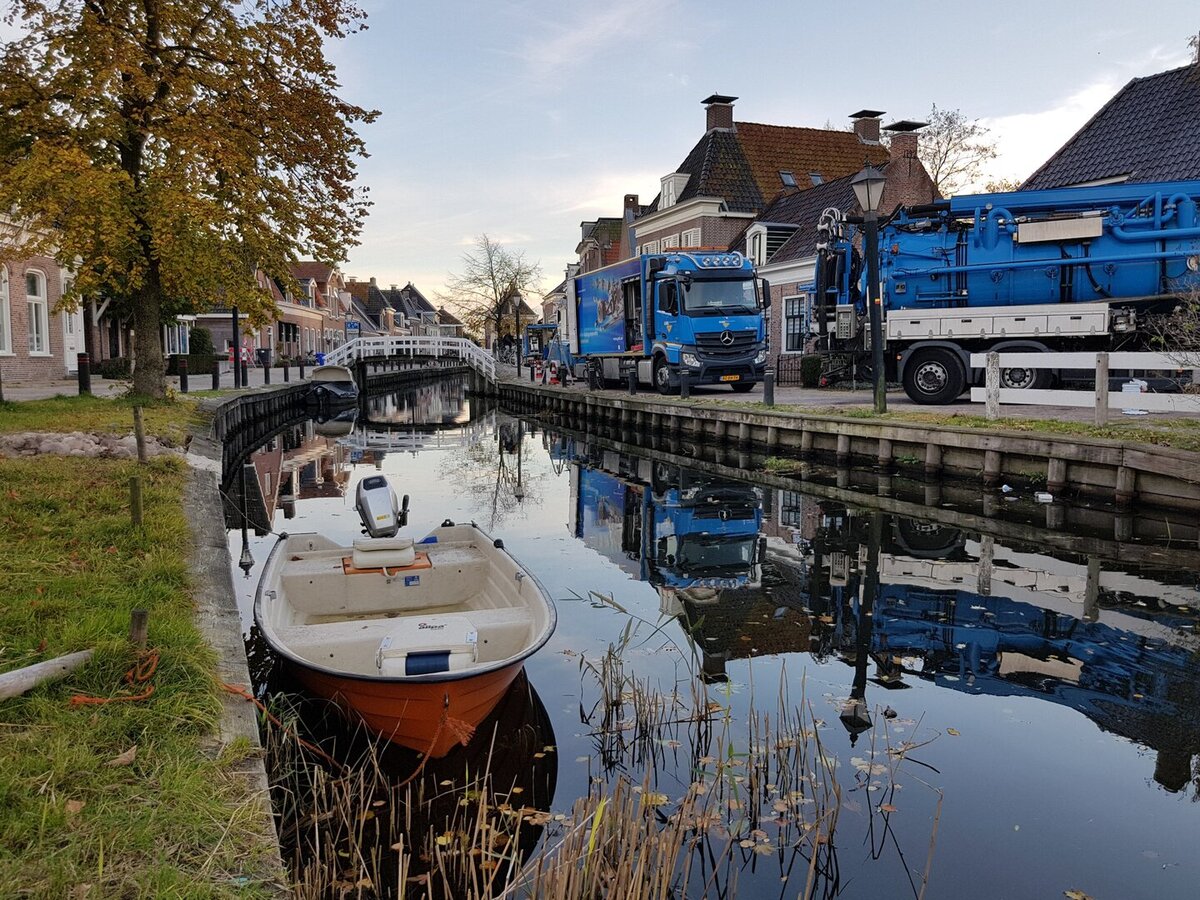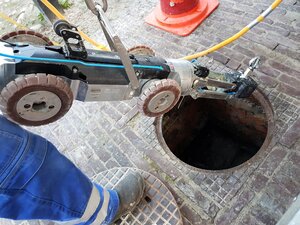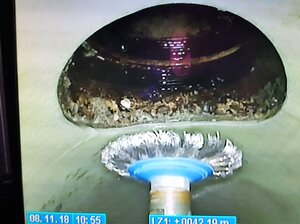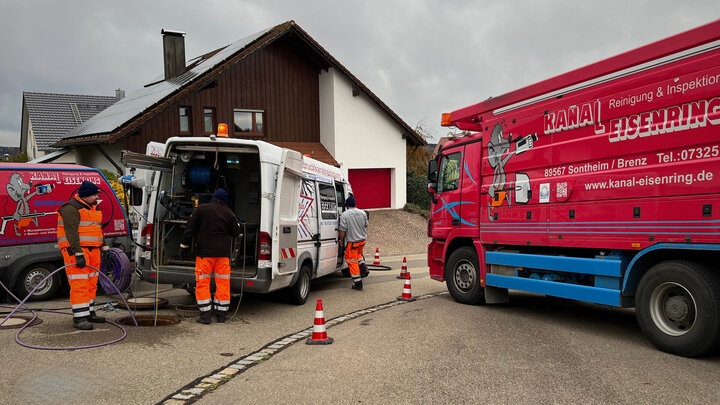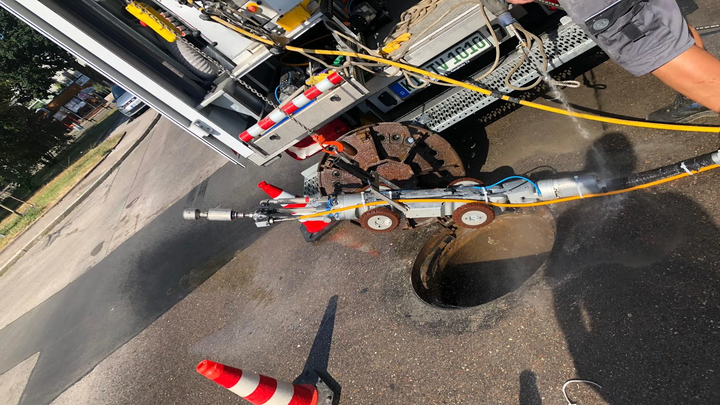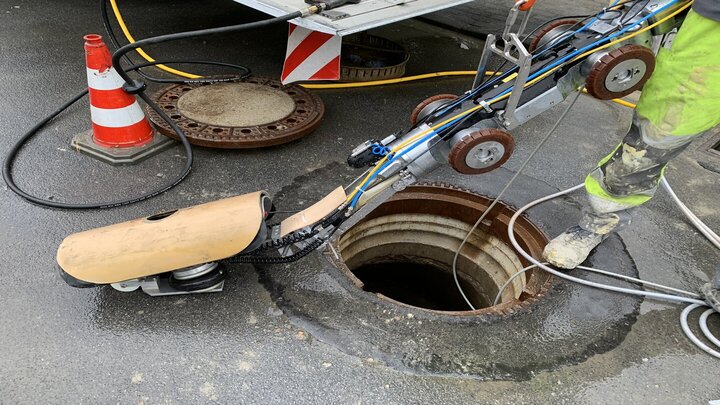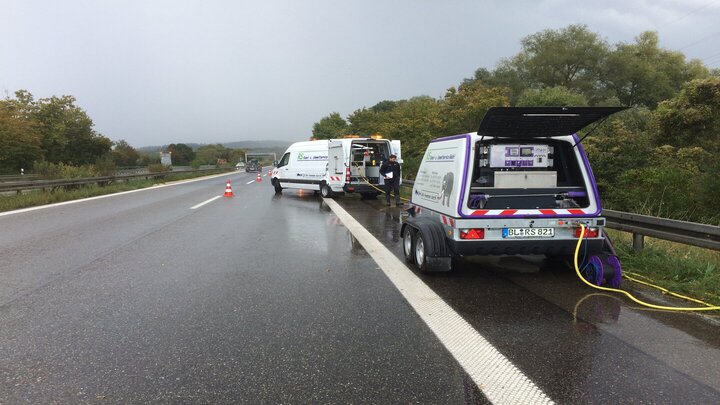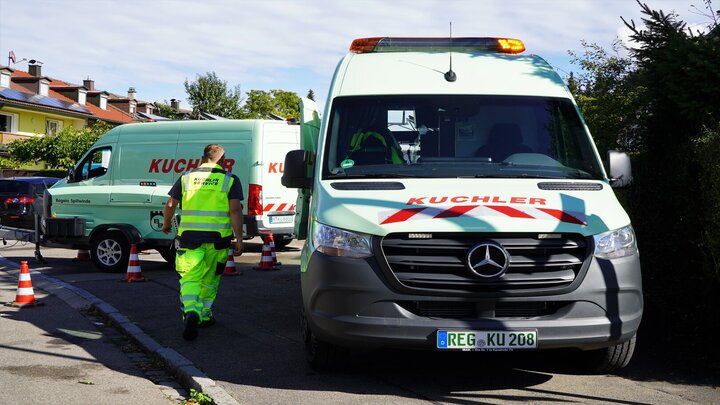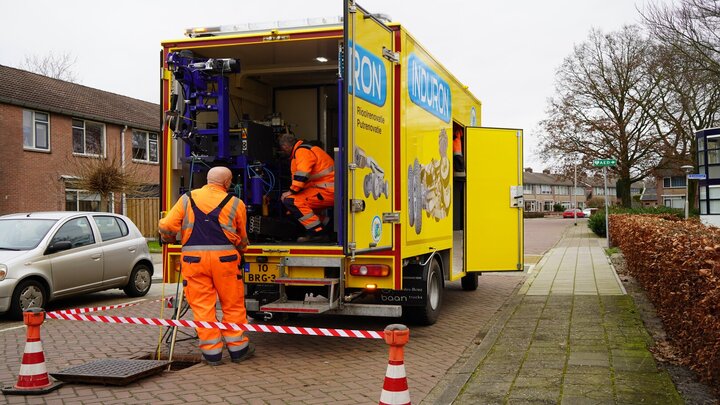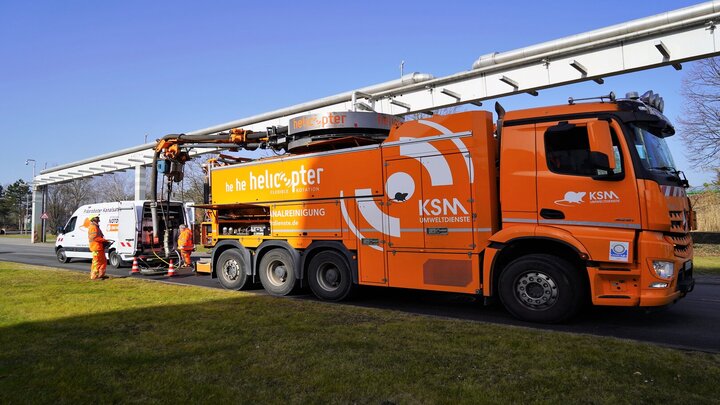MicroGator: Powerful and reliable
Challenge
Completing the job requires an ambitious daily workload: today he is working with the blue truck in a small place called Kollum in the province of Friesland. While his colleagues from the UV team are already installing a pipe liner in the sewer on the other side of the road named Oosterdiepswal, Lugies is opening the 19 connections under the Westerdiepswal. A 40-metre liner and a 123-metre liner were installed over the entire length of the sewer reach under this road. Tomorrow, on the opposite side, he will open 22 connections over a distance of 122 metres.
Solution
The well-coordinated teams work efficiently; every move is perfect. Lugies controls the movement of the cutter precisely with two joysticks via the control panel and cuts the inflow pipe free with millimetre accuracy. "Operation is intuitive and quick to learn," he says. The former truck driver and firefighter is a career changer and is in charge on the vehicle. He is assisted by his colleague Teus Wemmers, who he is currently preparing to take charge of another rehabilitation vehicle in the future. "The vehicle is in operation 5 days a week and thus already in the autumn has 1600 working hours on the clock for this year," says Wagenvoort. "Depending on the length and diameter, the cutting robot works on 2 to 3 liners per day, averaged over a year that is about 100 metres per day," Wagenvoort continues.
The IBAK Robotics cutting robot fully covers the application range from lined DN 200 to DN 800 and is electrically driven. "Hydraulically driven cutters are powerful but do not have a high rotation speed. Pneumatically driven cutters, on the other hand, have a high rotational speed but are not very powerful. With the MicroGator, you have both advantages: power and high rotational speed," reports Joey Lugies, who has already worked with a variety of rehabilitation robots. The experienced user has been with GMB for 3 years and already tested the MicroGator in practical operation during the pilot phase. For more than a year, the latest generation of IBAK robotics cutting machines has been a reliable working tool with which Lugies routinely performs cutting work in GMB's multidisciplinary projects.
"For a 250 meter long DN-300 reach with 14 laterals, I need about 1 ½ days with the MicroGator," reports Lugies. Preparatory cutting work, such as removing roots, removing protruding pipe connections and adhering deposits and aligning misplaced joints, takes him about one day. A mushroom head attachment with a diamond coating is best suited for this. Once the pipe has been cleaned and the liner installed, Lugies first roughly opens the laterals with a double-cone cutting head. Then the steel brush attachment is used to do the finishing work and finally the laterals are roughened. "Including the installation of the liner, we are therefore on site for 2 ½ days," says Lugies, summing up the classic procedure of rehabilitation operations. Among other things, the MicroGator's long range ensures this speedy process. "Going distances of more than 100 metres into sewers is no problem," Lugies emphasizes.
"We have a lousy colleague here in Holland called the weather. If it rains heavily, we have to open the laterals quickly so people don't get their feet wet. That sometimes takes until late in the evening. In towns, noise exposure of residents must be avoided as much as possible. So it's a good thing that you can hardly hear the MicroGator," says Lugies. With the almost silent operation of the electric cutting robot, GMB has not only been able to significantly reduce the workplace exposure of the technicians but also increase the approval and acceptance of night operations in residential areas. "I can continue working into the night without having to turn on the generator, even if I've already been working on battery power all day," comments Lugies. The electrically powered robot does not require heavy and energy-consuming power supply equipment. It therefore incurs significantly lower operating costs. One battery charge for just five euros is enough to power a vehicle with a cutting robot for a whole day.
Result
With the tight schedule and the annual workload already achieved, downtimes of the cutter don't seem to be an option. Asked about it, Lugies says "The customer service is fast and responsible. During the entire cooperation with the IBAK staff, I could count on uncomplicated support from Kiel. Last year too, when the cutter was running reliably, a competent contact was always available and provided dedicated help.
The work under the "Westerdiepswal" has been completed; Lugies and his colleague Wemmers are on schedule. The GMB team on the opposite side of the road has also completed the installation of the pipe liner, so that Lugies can open the inlets there according to plan the next day. "In 2018, we have already rehabilitated 45 kilometres with the MicroGator, and we will manage 50 kilometres by Christmas," says Lugies optimistically as he finishes work for a well-earned evening rest.
Company introduction
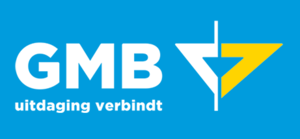
The family-owned company that was founded in 1963 employs more than 450 people, including 70 who work within the wastewater technology business line. Maurice Wagenvoort is the head of the GMB Rioleringstechnieken B.V. division that is based in Kampen in the Dutch province of Overijssel. He added sewer rehabilitation to the scope of services in 2012 and continuously expanded the sector so that it now accounts for 80% of all orders. The remaining 20% comprises the company's original core competence with sewer cleaning and inspection. The fleet of 28 vehicles includes a 12-tonne truck equipped with the MicroGator electric cutting robot.
